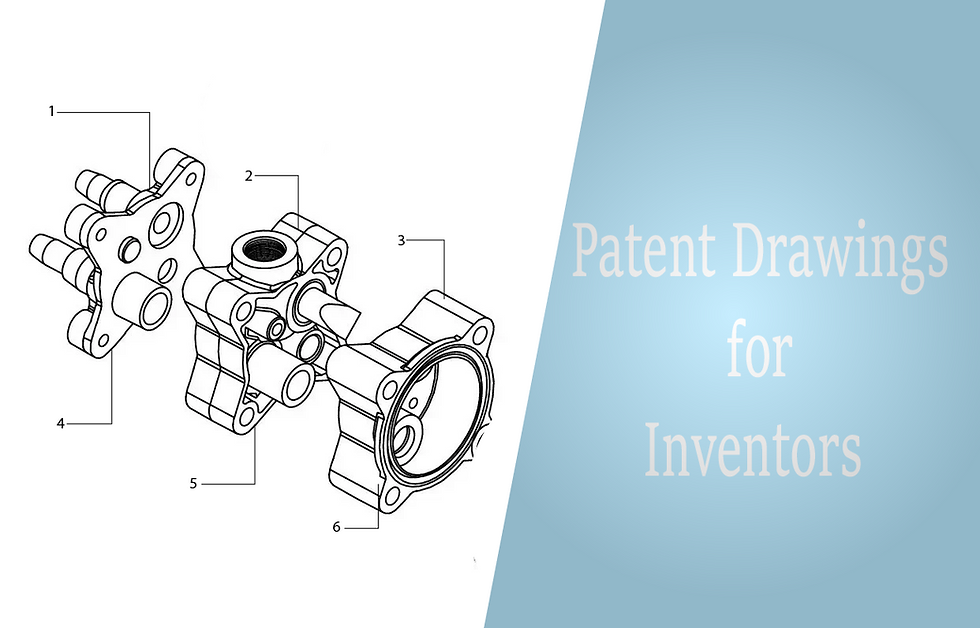
Getting patent drawings made for your invention doesn’t have to be complicated. Here’s a simple step-by-step guide to help you get started:
Sketch Your Idea: Even a rough sketch can help give the patent drawing company an idea of what you're aiming for.
Choose a Professional Service: Look for a patent drawing company that specializes in technical and engineering drawings, like DesignForge. Professionals will help you refine your sketches and ensure they meet patent office guidelines.
Work Together: Provide any documents or specifications that explain your invention’s features and functions. The more information you share, the better the patent drawings will be.
Review the Drawings: Once the first draft is ready, review the patent drawings with your team and your patent attorney. Make sure they clearly illustrate your invention's design and functionality.
Submit Your Application: After finalizing the drawings, submit them with your patent application. Your patent attorney will ensure everything is in order.
If you're in the early stages of bringing your invention to life, you've probably heard about patent drawings. They’re essential to securing the intellectual property rights to your new idea. But how do you go about getting professional patent drawings made for your invention? Let’s break down the process, explore the importance of working with a professional patent drawing company, and explain why it could make or break your patent application.
What Are Patent Drawings?
Patent drawings are technical illustrations that visually describe your invention in precise detail. These illustrations accompany your patent application and are meant to help patent examiners, and anyone reviewing your patent, understand how your invention works and looks. It’s not just about making your invention look good on paper—it’s about clarity, accuracy, and following strict guidelines set by the United States Patent and Trademark Office (USPTO).
There are different types of patent drawings, but design patent drawings focus on the appearance of your invention, while utility patent drawings explain how it functions. Both are essential depending on the type of protection you're seeking for your invention. The better your drawings, the easier it will be for the patent examiner to understand your invention, which can speed up approval time.
Why Work With a Professional Patent Drawing Company?
You might be tempted to draw your patent illustrations yourself, especially if you have a creative side. However, there are specific rules and technical standards that must be followed, such as margins, shading, line thickness, and even what can and cannot be shown in the drawing. Professionals who specialize in patent drawing services understand these guidelines inside and out.
At DesignForge, for example, we not only help create high-quality design patent drawings but also ensure that the drawings meet every USPTO requirement. Working with pros saves time, avoids costly mistakes, and ensures your drawings truly showcase your invention in the best possible way.
Explaining How Your Invention Works: The Engineering Behind Patent Drawings
Patent drawings do more than just illustrate your invention; they help explain its function. In combination with the written description (also called the specification), these drawings provide a complete picture of how your invention operates. This is particularly important for inventions with mechanical or moving parts. The drawing helps patent examiners visualize the interaction of components in a way that the written document alone might not fully convey.
Engineering expertise is essential when preparing design patent drawings. An engineering background, like the one we have at DesignForge, allows us to understand the function and mechanics of your invention, ensuring that the drawings reflect not only what it looks like but also how it works. This understanding can be the difference between a patent being approved or rejected.
Why You Shouldn’t DIY Patent Drawings
While it might be tempting to save a little money by doing the drawings yourself, remember that even a minor error can result in costly delays. Professionals know the ins and outs of patent law and how to best represent your invention in ways that comply with legal standards. Additionally, they can handle revisions or special requests from the patent examiner, reducing the back-and-forth that often comes with self-made illustrations.
If you're serious about protecting your invention, investing in professional patent drawing services will be well worth it in the long run.
Consider Working With DesignForge
Here at DesignForge, we know the ins and outs of patent drawings from both the engineering and design perspective. We’ve worked with inventors who needed everything from design patent drawings to full mechanical illustrations. We take pride in turning rough concepts into professional, patent-ready drawings that meet all requirements.
If you’re wondering how to get patent drawings made for your invention, consider reaching out to us. We’re here to help make sure your drawings are not only accurate and professional but also that they help tell the story of your invention.
Whether you’re just starting out or are ready to file your patent, we’d love to be part of your invention journey. Reach out to DesignForge for a free consultation and see how we can help bring your idea to life with high-quality patent drawings.
Nick Tamborello
DesignForge Content Creator
_edited.png)
Comments